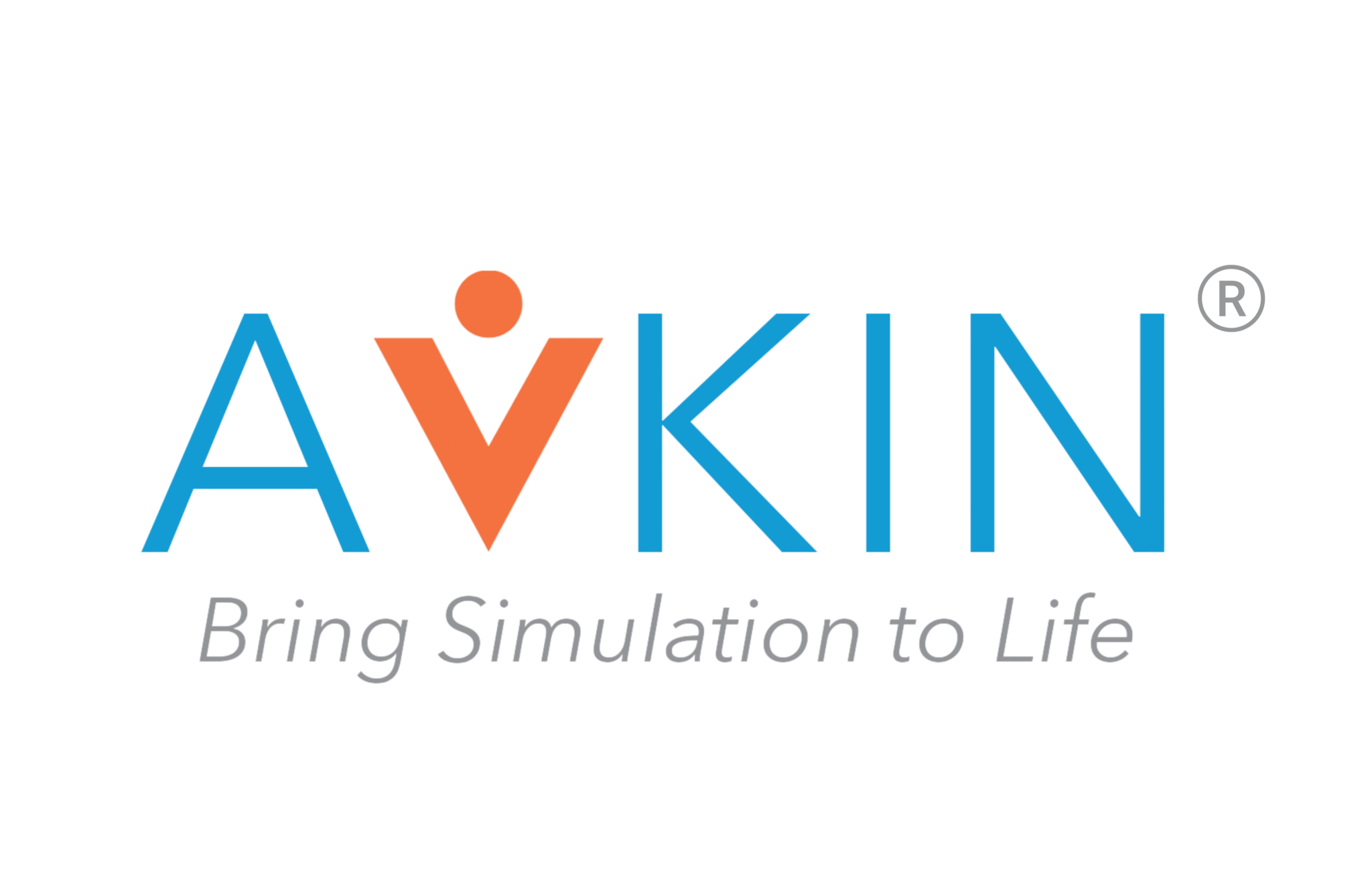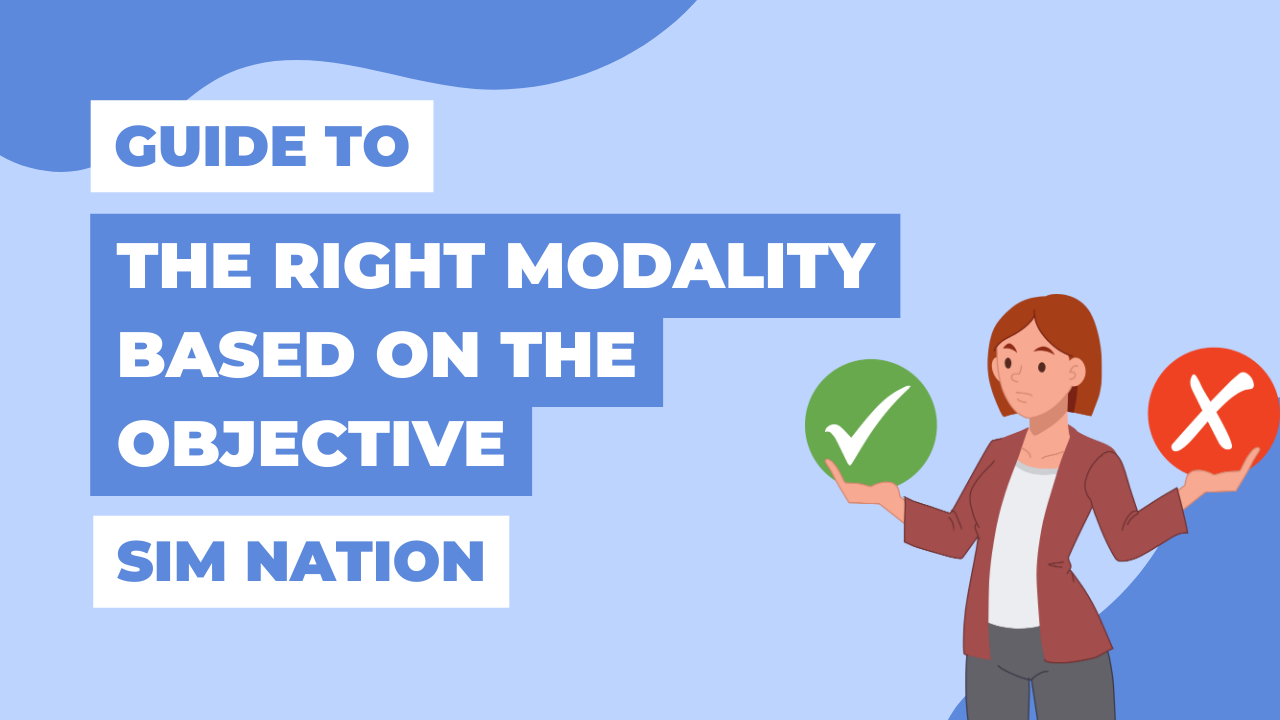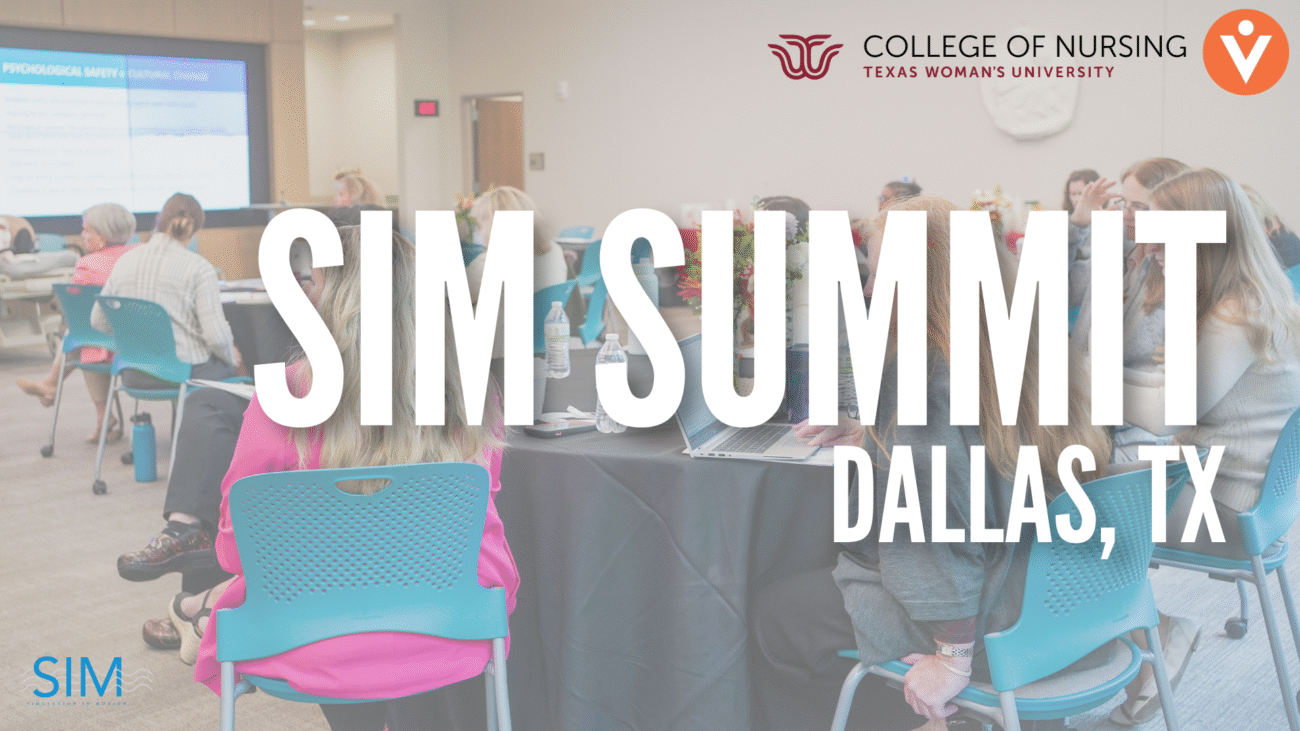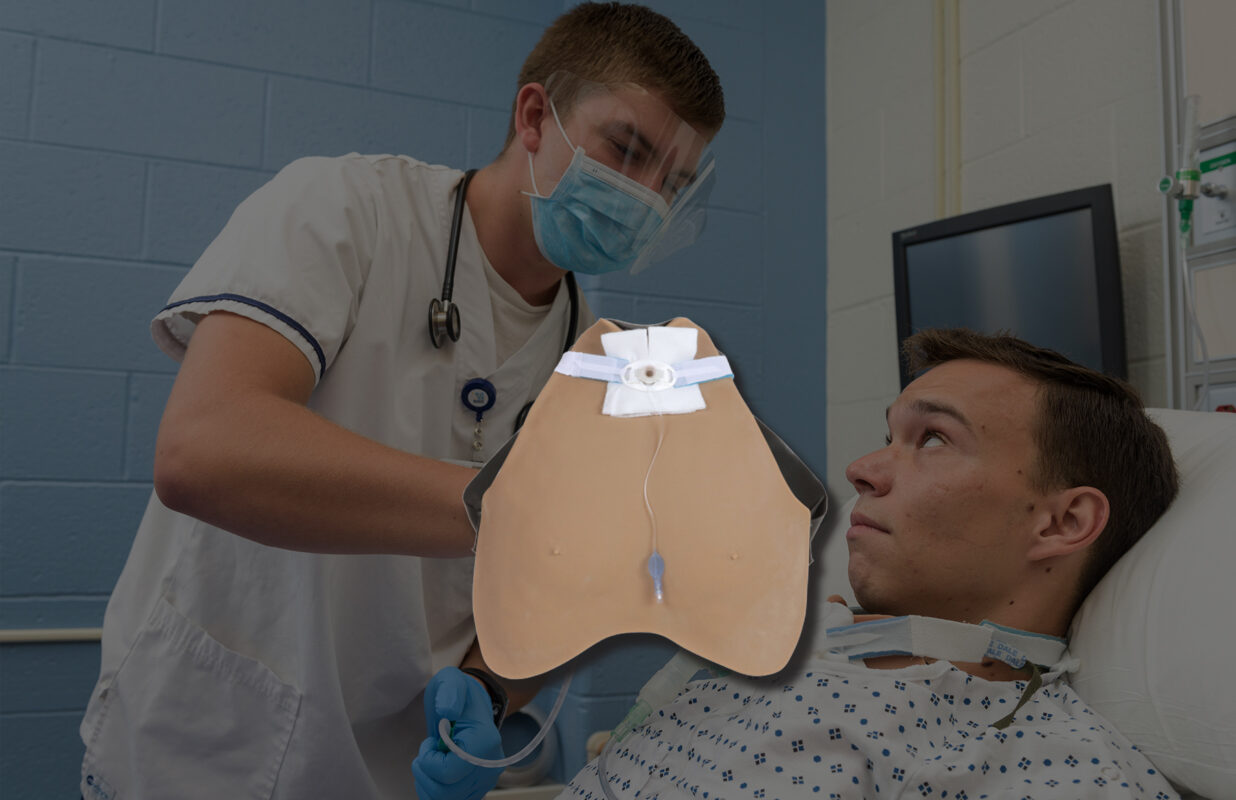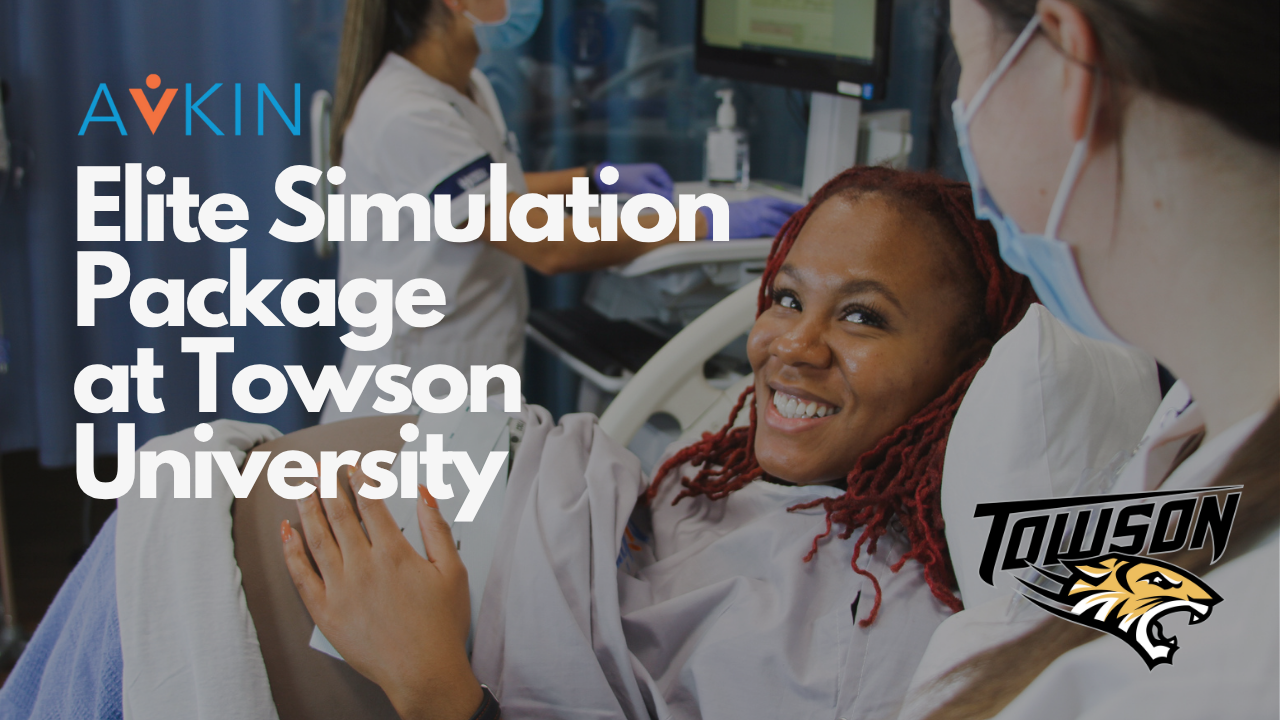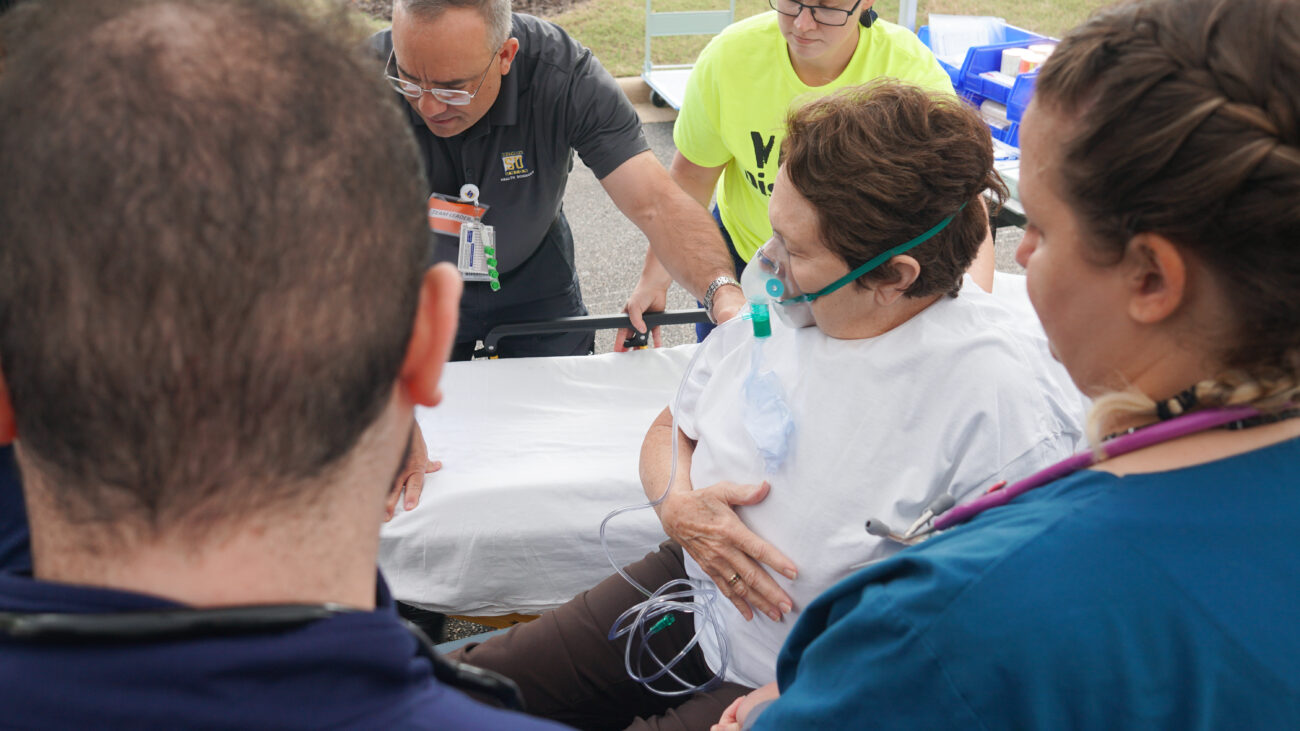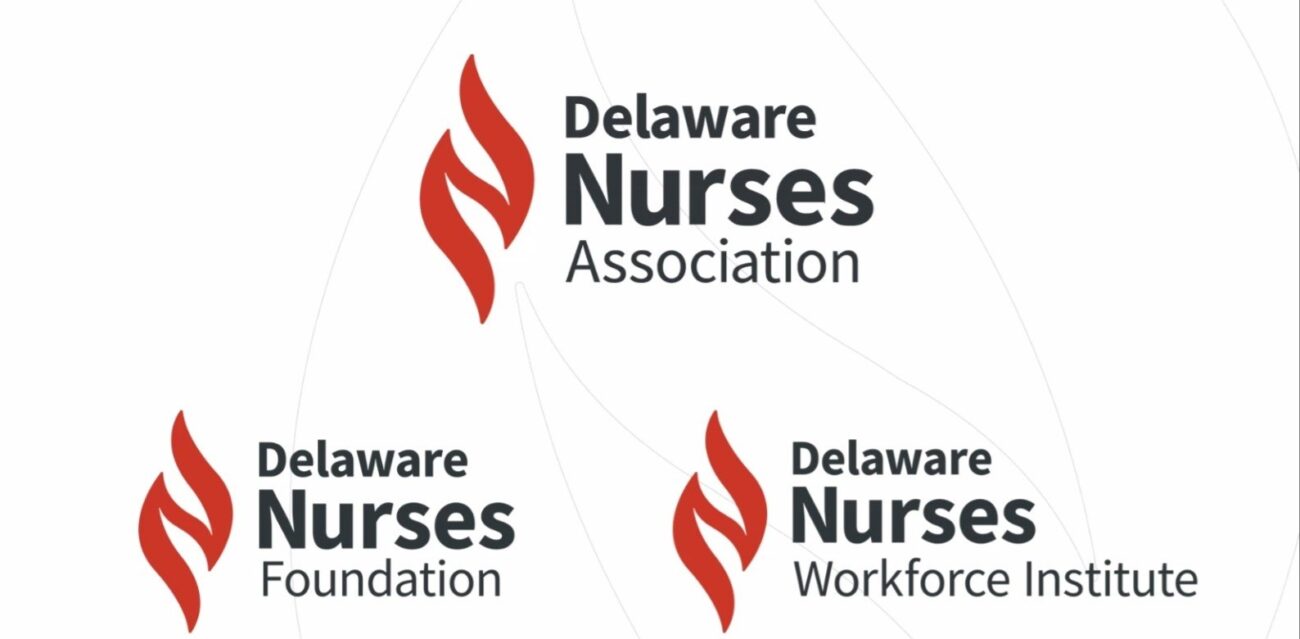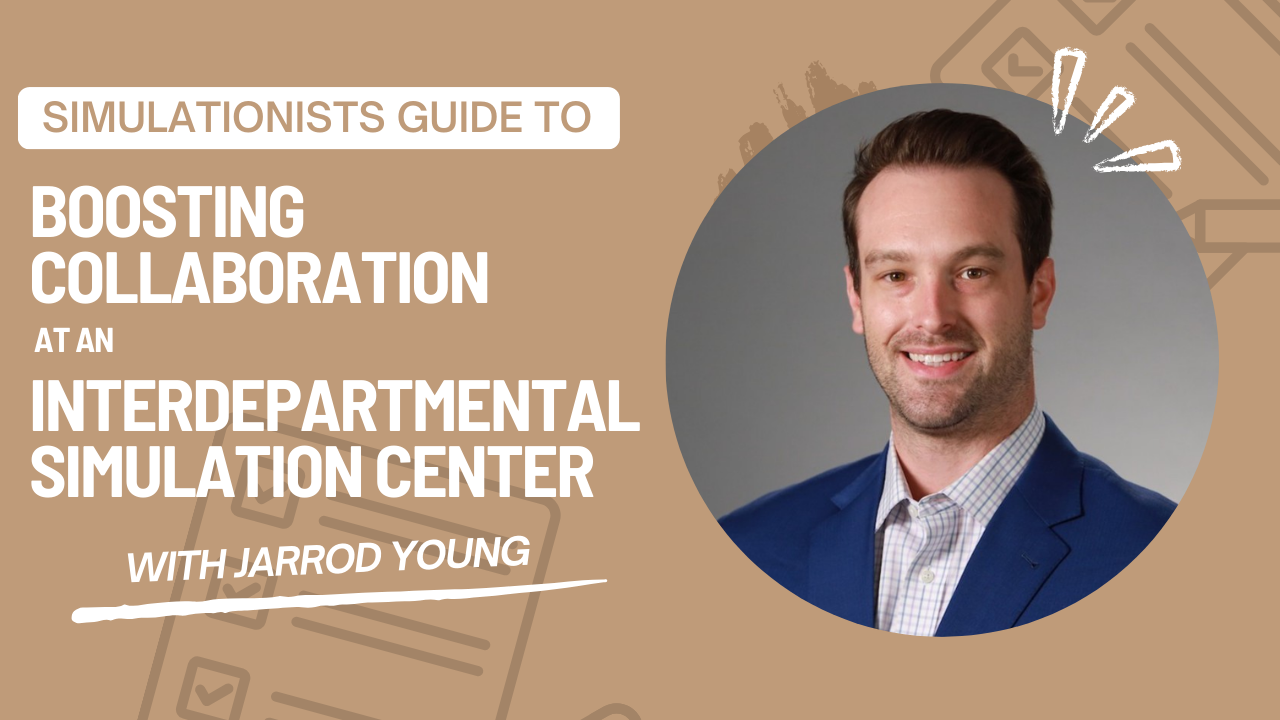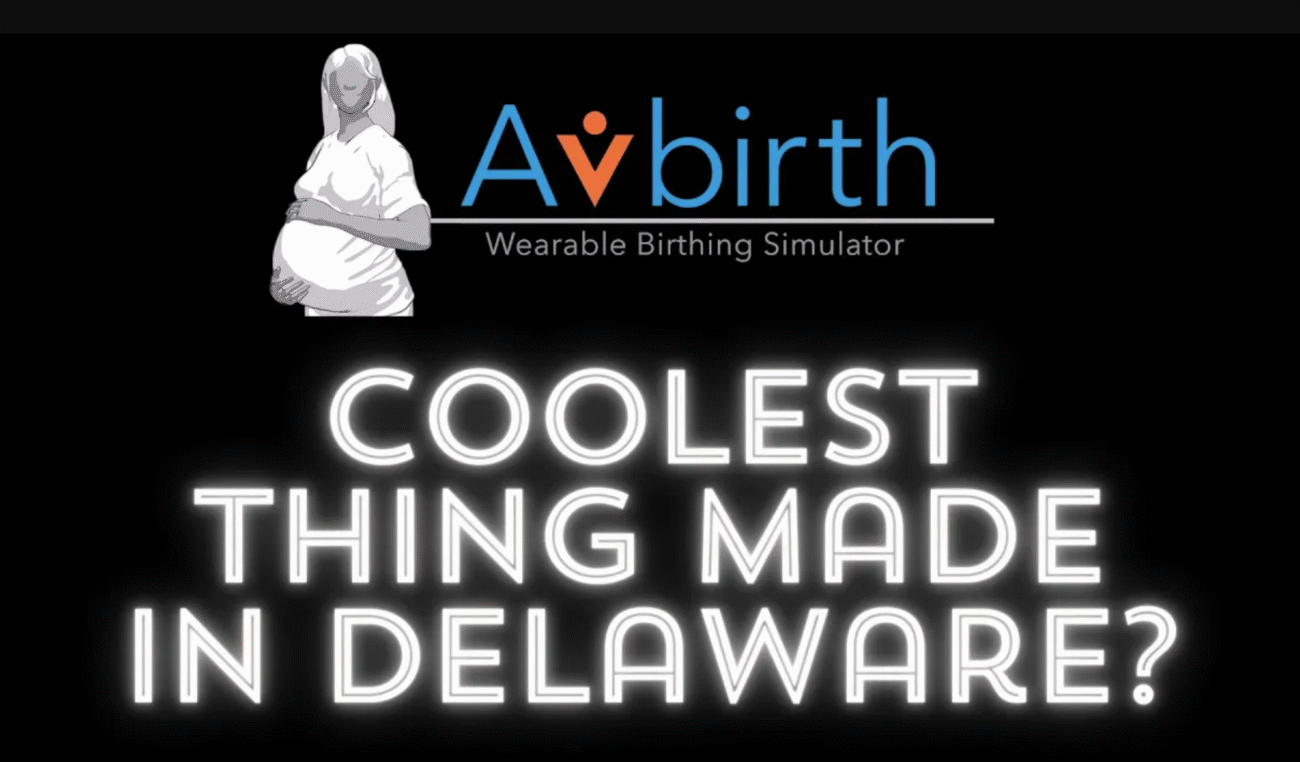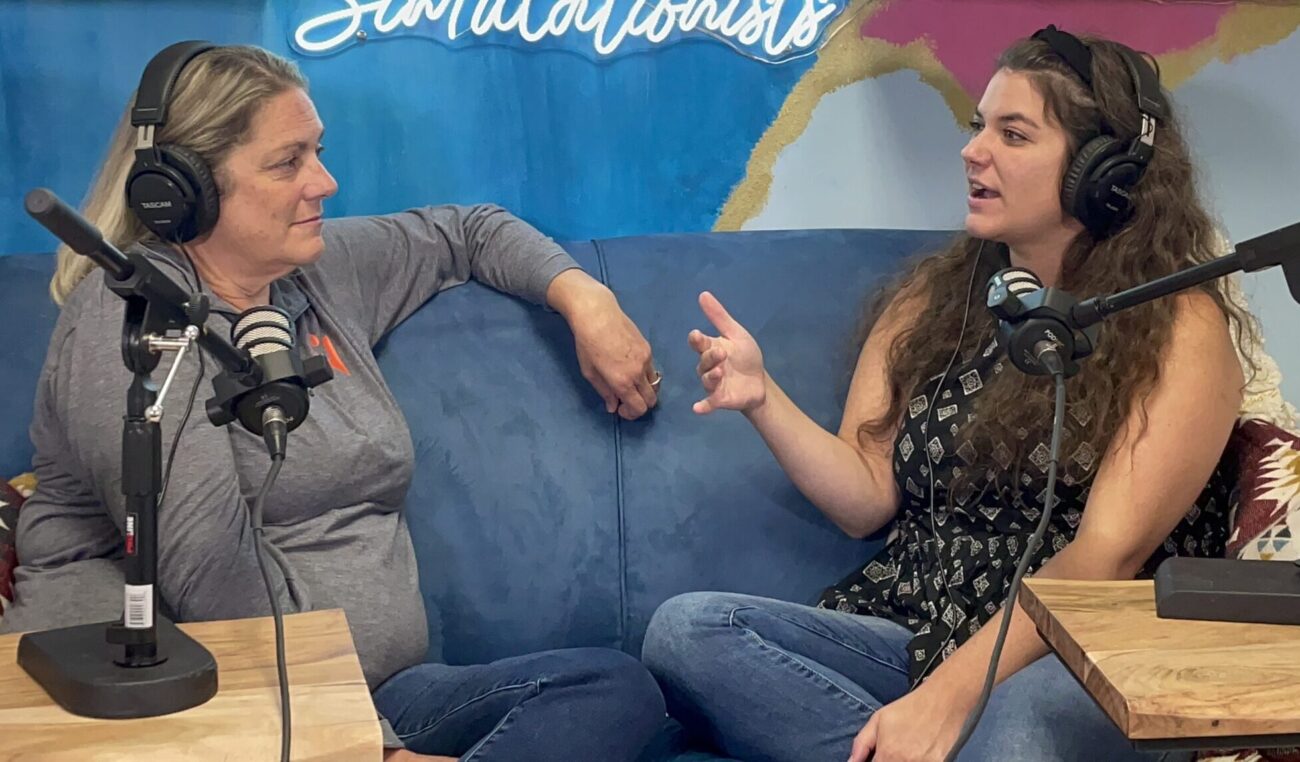Simulationist’s Guide to: Funding Sources
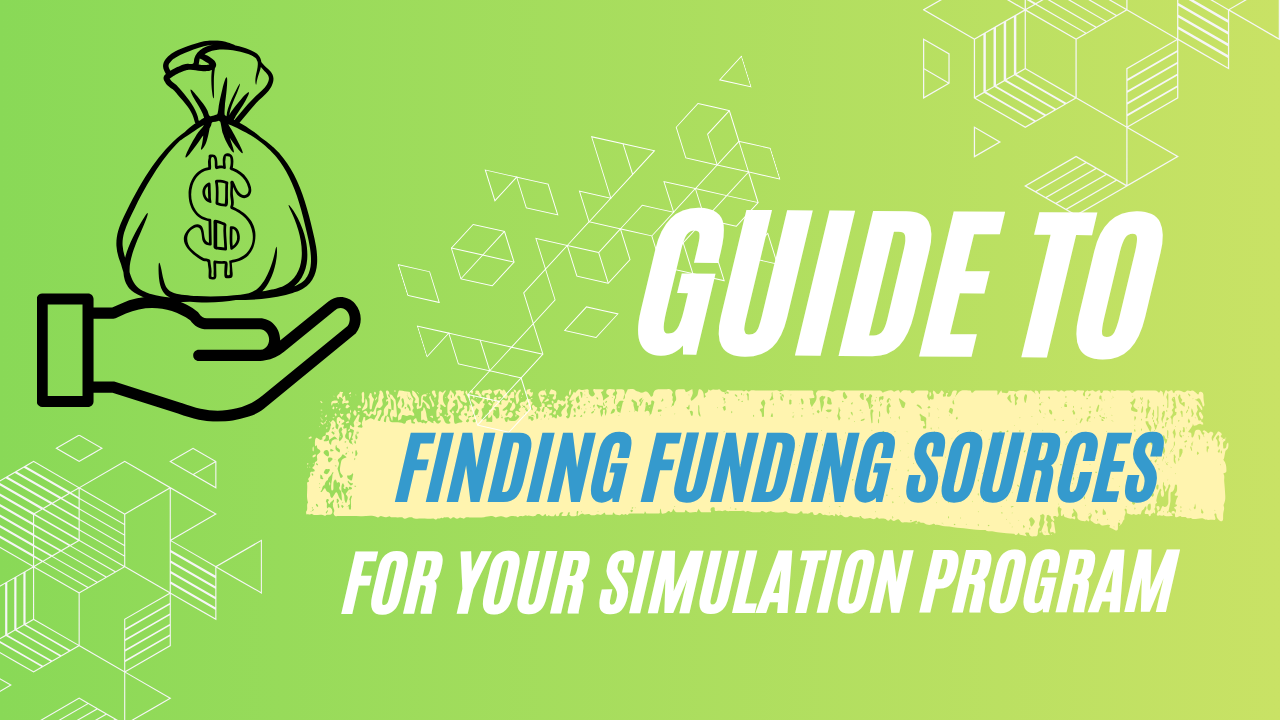
Securing Funding for Your Simulation Center: Essential Strategies from Simulation Nation
Funding is critical to the success and growth of healthcare simulation centers, but many educators and administrators find the process daunting. In a recent episode of the Simulation Nation podcast, hosts Amy and Megan shared insightful, practical strategies on securing funding through diverse sources, including internal and external grants, donor relationships, and state and federal opportunities.
Understanding Budgets and Advocating Internally
Amy explained that simulation centers typically operate with two primary budgets: operational and capital. Operational budgets cover daily expenses, while capital budgets are reserved for significant purchases like mannequins and other high-dollar items. Megan emphasized the importance of proactively advocating for a capital budget, particularly highlighting the value of clear, business-oriented communication to leadership.
Both hosts urged simulation educators to reduce suggestive language and clearly state their funding needs. Amy suggested using tools like ChatGPT to refine communications, ensuring concise and direct requests that align with institutional missions.
Harnessing Donor Relationships
Amy and Megan encouraged simulationists to actively build relationships with potential donors, including alumni and local foundations. Hosting interactive events during Healthcare Simulation Week, showcasing student experiences, and involving influential individuals, such as board members or significant others of key university figures, can significantly enhance donor engagement. Megan specifically pointed out the powerful impact of tracking and sharing concrete outcomes with donors, which can sustain and deepen financial support.
Maximizing Internal and State Grants
Megan highlighted findings fromthe follow up study, executed by Johns Hopkins University, that compared manikin use to simulations using standardized patients (SPs) wearing the Avtrach. Students in the wearable simulation group were:
-
- 3x more likely to ask questions
- 4x more likely to offer reassurance
- 5x more likely to recognize patient needs
- 6x more likely to self-identify safety errors
Amy explained that the increased interaction likely stems from the human-to-human connection, where students are forced to communicate, think critically, and respond authentically—just like they would at the bedside.
Navigating Federal Funding
Federal grants and congressionally directed spending (CDS) represent substantial opportunities, albeit more complex. Amy recommended working closely with institutional grant offices to ensure compliance with federal regulations. Megan and Amy discussed how targeted communication—aligning proposals with the missions and goals of senators and representatives—can significantly enhance the success rate of applications. Tools like March of Dimes data can strengthen grant narratives by providing relevant and co
Additional Funding Avenues
Amy and Megan also pointed out less traditional funding sources, including associations like the Children’s Miracle Network and hospital auxiliaries, which might support specific simulation tools or programs.
Building Sustainable Relationships
Above all, the hosts emphasized the critical role of ongoing relationship building. Networking both internally and externally, leveraging marketing departments, involving enthusiastic student leaders, and consistently tracking simulation impacts were underscored as best practices.
If you enjoyed our guide to Human Simulation, check out more episodes of Simulation Nation below, and subscribe to our podcast and Youtube so you never miss an episode!
Full Transcript:
This episode of Simulation Nation is brought to you by Avkin, your one-stop shop for wearable simulators and everything standardized patient.
Megan (00:25.39)
started inside of simulation or maybe don’t know all of the opportunities that you have to fund your simulation center. So a lot of times we’ve heard through the years people struggle with having a budget set aside for their simulcasts, know, to purchase large equipment items.
Through the years of being here at Avkin, we’ve really seen kind of all of the different options in terms of how people are funding their simulation labs. And we just wanted to make sure that we were sharing it. We felt like this was really good pieces of information to know how other people were able to receive that funding. And we just wanted to make sure that we were kind of sharing the knowledge and putting it out there for other simulations.
Yeah, and I think the important thing.
I mean, again, this is super basic, but it’s not something that I knew really before I started in the simulation world. Most nurses, I assume most people in health, our curriculum is so full with courses that you don’t really get an opportunity to take business courses that we understand.
So fundamentally, there are two different budgets. If you’re not managing a budget, you’re probably, you know, if you’re managing a budget on tree, you’re a maracas, but if you’re not, you’re a maracas.
Amy (01:34.638)
There’s an operational budget that is kind of like paying for the spaces, paying for salaries, paying for, you know, maintenance and upkeep too, but then there’s also a capital budget. And so there’s typically at every university there’s a dollar amount of what it is and it can vary from a thousand dollars to twenty thousand dollars. It just depends on the institution so you do need to know. But that capital budget is something that is
Keep the lights on.
Amy (02:01.902)
It’s something you wouldn’t be purchasing every year or doing every year. And it’s really to buy larger dollar items. And so with that, if you have a capital budget, you might want to ask your leadership if you do. Because if there is such a thing, then that’s fantastic. Because then there’s money being set aside for purchases. Most places don’t. I think simulation education, because it’s fairly new in the industry, people just really have gotten a lot through grant funding and other.
outside funding sources. what I really wanted to do today was talk about our number one, my own personal experiences, as well as the experiences or the things that we’ve come across with our different customers of how they’ve been able to find unique funding sources.
I wanna say too that if you don’t currently have capital budget, I think we both agree, but it’s you should start advocating for that sooner rather than later. I think that a lot of times with SimLabs, and I experienced this a lot more with Australia, but I’m sure it’s very similar here too in the US, but they put all of this investment to build the SimLabs with large grants or large funding sources, but then nobody put it into the budgets to say, this mannequin is eventually gonna break down. This wearable simulator will eventually break down.
you know, blood pressure cuffs or whatever, you know mean? Like whatever these large amount or pumps or whatever to keep these things going, right? New computers, exactly. And I think that that’s something that for our industry to continue to grow, this is something that we need to be pushing for and advocating for. I do think that SSH and their accreditation do a very good job of helping to advocate for sim centers to be more firmly planted inside of the institutions. And so I think that that does come with
computer.
Megan (03:44.482)
having budget set aside, having capital purchases set aside. But I think that this is something also that us as simulationists should also be pushing for and advocating for. I think a lot of times we are very suggestive and very, well, it would be very nice if I could have this. And it’s always mother may I, it’s always going and saying, hi, yes, our mannequin, it’s on its last leg. And a lot of times it’s like, well, let’s find a grant, let’s find something. And yes, I think we need to be, like we’re required to be scrappy. We don’t have any option, right? I think everyone in sim.
We have to be able to rub two pennies together to get a dollar, right? But I think that we should also be asking about capital purchase. And then if we don’t have a budget for capital purchases, then we need to be advocating for, well, when can we get that added into the budget? Or how can I help support you take this to a higher leadership to get this budgeted for?
I think it’s excellent advice. The other thing I’ll say is the whole suggestive language, Google it. I had no idea how suggestive I have been. As nurses and as females, we are typically very trained to use suggestive language. One of my biggest revelations, I read the book Playing Big by Tara Moore, and she talked about this, about the difference between the genders and how we approach things and how we think about things. And obviously, it’s not a one size fits all, but in general. And I was shocked at how
how I had been super suggestive in my professional career as a nurse and then also as I transitioned to the sim lab.
that’s funny because it’s not personality dependent, right? No. I would never say, you’re a suggestive person or anything like those lines. I think that, we are very, especially when it comes to funding, right? I think where we feel out of our realm, right? A lot of times.
Amy (05:15.724)
Not at all.
Amy (05:24.654)
When it comes to budget and finances that’s
feel like it’s such a, again, am I allowed to say this? Am I allowed to ask? It does feel like we are in inconvenience. And so since it’s not necessarily where we come from or where our feet are rooted, it feels even more uncomfortable, I think, a lot of times, to ask and advocate for capital purchase and things along those lines or big, big expenditures. And I think that that’s something where I would encourage you guys, even just using like ChatGPT or something like that and putting in an email and saying, take out the suggestions
language and getting something back out of it even just starting with those points I think are really helpful because it helps you start to see like right I did say well if it would wanted to please you know right and again I think being able to put something like that and even just see the revised response I think that’s great or even talking points for when you were gonna go talk to your Dean about it but yeah again I know that a lot of times we’re but you’re that AI is gonna take over
Yeah.
Amy (06:08.686)
Or I just want to ask I just
Amy (06:24.878)
Just know that your leadership is thinking about this from a business mindset. So you need to approach it from a business mindset in order to be able to advocate. That’s my only suggestion. Again, I agree with you 100%. So let’s talk a little bit about funding options. I think the least intrusive and the one that people are probably most familiar with is getting donors. it doesn’t require an application. A lot of times there are development.
departments at their university and their job is to go out and seek donations for things. And so a lot of times we’ll have customers say, I want to put this on my wish list, right? And so it’s in case somebody comes along to what that wants to donate to the nursing program or to the simulation center, they have a list of things. Well, that’s a very passive way of expecting that you’re going to be able to get donations, right? You’re just hoping that Prince Charming comes along and, you know, drops, you know,
a couple of things.
Megan (07:34.598)
I it’s like, it’s not out of the realm of possibilities, but you’re also not asserting yourself and saying, okay, let me kind of like take the bull by the horns here and, you know, go out and seek different things. It’s kind of like you’re waiting and hoping for something.
want to donate, right?
And you’re also hoping that the development department is going to make recommendations that your program is the one that they potentially donate to. So you need to be the development department for your sim center.
Would there be development departments at community colleges or?
I assume so. mean, don’t, I don’t, I didn’t ever work in one, I do. mean, again, it probably depends on the size and things along those lines. But, you know, just think about the fact that you have alumni that have graduated from there. So maybe they’re not super rich, but maybe you could do like a fun drive or something like that. But.
Amy (08:29.482)
As far as you need, if you do have a development department, you do need to find out who your development officer is. You need to invite them into the sim lab. You need to let them see what’s happening and get excited for what you’re doing. You also think about healthcare simulation week, planning an event where donors are invited to come through your sim lab and see the different things that are happening. Having your students talk about testimonials about how simulations has impacted them. So it needs to be more of an attack plan. again, I say this.
all the while in the back of my head knowing that everybody is just trying to catch up and catch a breath and they’re so busy. it’s, Healthcare Simulation Week is really a time that is set aside for us to pause and celebrate what we’re doing. So try to think about something like that. Me personally, we had a demonstration of our SP program when it was first starting out and we invited donors in to come and see a demonstration of that. And that was a game changer because that allows people not just to hear about it and maybe they do a tour and they
quickly walk through your Simcenter, but they’re actually experiencing that through the eyes of what the student is experiencing, right? So think about the idea that there is a donor out there probably that is potentially interested. I know, Megan, you had a funny story about a potential institution.
A Standardized patient that was actually very involved with that. So if you do have a Standardized patient program Sometimes they are very well connected and so thinking about what that could mean for potential outside donors But there was one institution where they actually had the president’s wife of the of the university and she was the SP for them and basically they were saying like yeah, we couldn’t buy the amount of press and good word that we get from her speaking directly to our president every night
So invite this spouse or significant other or children of your president. Maybe that’s a thing.
Megan (10:20.238)
I don’t know. them come. The other recommendation I would make too though is having TAs be involved in your health care sim week and have them think through what are some options that they think would be good for having people come through and see it and get their ideas because the more involved they are and you are listening and incorporating their ideas, the more involved they are going to be to volunteer to come in and help you run it. And I think a lot of times we think like, we’re just by ourselves. How are we going to be able to manage all of this? But starting to even outsource this
to other people who are excited and involved in the sim lab, you’re starting to share some responsibility. And I do think that a lot of times, like if you think about sororities, they’re very used to planning events, guys. They’re very good at planning events. They’re good at marketing, right? They know how to work social media. So being able to have them involved and be able to say, yeah, this is what I think is really cool or really unique, seeing it from their perspective, but they also can probably really help you plan some events and know that. I also said sorority. I don’t want that to be sexist.
sorority or fraternity.
Good. And the other thing I’ll say is that there’s Student Nurses Association. So almost every program, because again, community colleges aren’t going to necessarily have sororities, but they probably have a Student Nurses Association, have them get involved. Because those students that are getting involved are typically the overachievers, the ones that are going to be going the extra mile, doing the extra thing. It’s good press for them that they helped out right down there. So that’s a great suggestion. I appreciate that.
EMS as well because I don’t want to cross over them but with EMS programs you guys have some of the most engaging and interactive simulations that you can do in terms of having people on site inviting people from the community to come see the training that they’re doing for paramedic first responders things like that you also have a high likelihood that people would be willing to donate to programs like that so again don’t think that just because you aren’t the nursing program and that again it’s gonna be harder for
Megan (12:13.306)
you to maybe get in touch with the donors and things like that. You guys have even more of an interactive component that also is going to be able to have people come in and actually see it and see how that translates to actual care in the community, which can also really help with you guys being able to kind of be that, you know, give them that flashy experience.
Yeah, lots of really cool ideas.
one EMS program that has our Avbirth and they do a homeless encampment and a postpartum hemorrhage in a homeless encampment. So you can have it, like you said, you don’t even have to have a room to do it in. You can do it in the parking lot in a car accident. We gave birth, the Avbirth gave birth in the back of my car.
actually.
So yeah, there’s lots of great opportunities with that as well. So that’s probably the one that people are most familiar with and the most comfortable with. The other piece is there’s typically, again, this is probably mostly in universities, but I think some community colleges would have this as well, is internal grants. So think about asking for…
Amy (13:15.944)
Where is the source for internal grants? Typically, if you get one one year, you’re not gonna get it the next. So you do have to be aware of like, if your nursing program just got funded recently with an internal grant, you’re probably gonna have to wait a couple of years. But maybe there’s a center for teaching and learning at your university that would have knowledge of what the name of it is. But for me, it wasn’t internal grant at the university, it was called a UNIDEL grant. So.
I wouldn’t have known what that was unless somebody had told me what that was early on. And I didn’t know when it came out, when it was released. And so as I got there longer, because again, I was in a coordinator position versus a director position, but as I was there longer, I started to understand that there was a rhythm to this and that the application could be made for these things. Now, typically those grants are going to be smaller dollar. You’re not going to get a million dollar grant from an internal grant, but
One very wise PhD grad, fairly new grad, said to me, you have to start small with small grants and show your responsibility with those. And then after you get those small grants, you can get the next grant. So it builds your CV or your academic resume as may be. And so when you can show, OK, she’s gotten a grant here. She’s had success with this. She’s gotten this funding here. It makes it more compelling. And so sometimes applying for the, you know,
the granddaddy of them all isn’t necessarily the smartest thing to do first.
What would you recommend would be a good starting off point for someone who’s maybe never received a grant before?
Amy (14:54.126)
Again, I think the internal grant is a great starting off point.
dollar amount. What would you suggest?
I would say at the time that I was going through this, which is about 10 years ago, it was about 50 to 20,000. So I would say probably 20 to 25,000 is what is reasonable. Typically, those internal grants will identify. So you could apply for the maximum amount. But you could also say, if we were to only receive 25,000, this is what we would Internal grants are typically a two or three page document. And it’s kind of like a mini.
for inflation.
you
Megan (15:19.662)
That’s also what we could do.
Amy (15:26.658)
grant application, right? So it makes you think through what your goals and your aims are and what you’re gonna do with it and why it’s compelling. But again, think about your audience with, I shouldn’t say again, because I haven’t said this yet, but think about your audience. It’s the university. How are you gonna make that university look good with that grant money, right? So whenever you’re doing it, whenever you’re writing a grant, small or big, you have to think about this from the perspective of what is their mission and vision?
Right? So look at your university’s mission and vision. How does what you’re going to do align with their mission and vision? It makes it a lot easier because then you’re not necessarily having to come up with all this fluffy stuff. Use their mission and vision and speak to it in that way.
Also, chat GBT again. Think about it. If you wanted to buy an Avtrach, so that’s the wearable simulator tracheostomy device, you could literally type in, does Avkin’s Avtrach?
and vision of X institution. And again, it’s going to spit you out a list of things. And then you could even say, draft for me what an overview would look like. And it’s going to give you a good starting point. I think a lot of times it is hard to think about it in terms of a different perspective. And if anything, it’s like, hey,
flip this for me so that I can read through it and then at least I have that in my head so it doesn’t need to be a copy and paste situation but it’s going to give you ideas of how you can craft this based off of what you want. Yeah do not copy and paste but but I think that it’s
Amy (16:52.878)
Please don’t copy and paste.
Amy (16:58.052)
it’s so much easier for me to have something on the paper than it is to start with. It literally, before I used to go and copy and paste a paragraph that had nothing to do with what I was typing about, but because there was already something on the paper, it made me feel like my thoughts could flow. Looking at a blank page just inhibits me.
To me though, a lot times it’s even trying to flip how, like what you said, what is in it for the university, right? And I think a lot of times it’s like, well, I want this really cool product because it’s going to be better for the students. And that’s what you will always go back to is it’s like, well, I know it’s going to be better for the students. So obviously everybody else wants it to be better for the students too. And I think a lot of times there’s a lot of assumptions that they are going to think what I think because I want what’s best for the students. But again, I think that it helps flip some perspectives that
Think about it from you.
Megan (17:42.058)
you wouldn’t have thought of before. And so I think if anything, just use it to be able to gain some insight into how they’re going to
To think of it with a different lens, yeah, for sure. And so again, that internal funding, typically it’ll come out every year or every other year, and there’s a cycle to it. And sometimes they put specific tags on it if there’s something, like some big new initiative at the university. So for us, when we got a new president, it was all about interprofessional education and getting outside of your silos. So just think about like if there is…
If there’s a kind of a new leadership, may be modifications and changes to that.
And I would recommend putting an alert on your Google Calendar or whatever calendar you use so that you do remember it as a regular cycle for when it’s coming out. Because we get busy, and it’s really hard to remember when these things are happening. So if you know, September 1 or whatever it may be, hey, this is going to happen soon, put a yearly annual reminder. Because then you’ll.
Yeah, well and give yourself a couple of months advance because yeah, it gives you some time to think about it. Again, it’s a two to three page typically. It’s not a lengthy application, but it is something to be, you know, to be, have a, get a heads up about. So that, that I would say is kind of, again, it’s a less, honestly the least threatening. It’s not.
Speaker 1 (18:41.72)
visit.
Megan (18:58.478)
It’s not as daunting, right? feels a lot more comfortable. It’s your nice step into it. You kind of ease into the pool versus cannonball in. And I think that, again, even working through that two to three page document, it gives you some understanding of what it’s going to be when you’re doing the bigger ones, right? So it starts to give you some perspective of what that looks like. I also think, too, even if you don’t get the internal grant, it’s really good to even have something to work off of, though. Because even if you work through that two to three page document, you can also use that for other
funding sources because you’ve already done one. So being able to also have things that you can work from or pull from for other applications, I think is also like.
Yeah, it’s a star.
The next one that I again, I think is pretty easy and and not as daunting I mean Finding the right well, I’ll just say Founding foundations so looking at foundations so there are very wealthy people that leave trusts or endowments and those trusts and endowments are Regulated by a board of trustees and there’s they are typically very clear about what they are investing in
Easy.
Amy (20:07.872)
So it’s not like save the world kind of things. It’s, know, I want to donate to this and this. So the Moore Foundation, the Haleem Fuller Foundation are national foundations that have a target to nursing programs. so you can, those foundations require a lot of massaging of relationships, it’s all about who you know, right? So the larger institutions are gonna, they’re
Yeah, marketing. Yeah
Amy (20:37.314)
their, what did I call them, not donors, but their development, their development team is gonna start trying to form these relationships, right? But there’s also smaller ones that are more local. So for us, we had a foundation called the Marmont Foundation that our dean was, they knew these people somehow, again, I don’t know how. And before I ever knew anything about foundations, she came to me and she said, the Marmont Foundation wants to donate something to the SimLab.
can you write something up about what you need? And so she kind of helped guide me on how I needed to write it. But again, go to the foundation and find out what their ideals are, find out what they donate to, find out what they care about, and then again, use ChatGPT to help draft a, typically it’s a one or two page document talking about why you need it and why it’s important and how it’s gonna make a difference. So again, focusing on their initiatives. The foundations typically,
will choose to issue their donations once a year, not always, but I assume once a year, and the board of trustees is who decides. So if you look at when the board of trustees meeting is, if you can get something in, they’re typically very clear about when the applications are due. Again, it’s something where if the Marmont Foundation gave us a donation, we weren’t applying for it again the next year. We might have to wait two or three years. So be aware of that.
But again, if you don’t have a development team, you can work with your dean or director to identify some. Looking up nursing foundation programs, I will tell you that the Avkin Solutions Consultants, the people that work here, they spend a lot of time learning about different funding opportunities to help our customers, because we often have customers say, want your things, but we’ve got to figure out a way to get funded. they can also help point you in the direction of potential foundations in your.
state or in your area that might be helpful to you. So I encourage you to reach out to them. But the foundations are, again, think about very wealthy people donating $3 million, right? And then that $3 million stays in the bank. And as it earns interest, that’s what they are using for donations. So the $3 million is there as the base. And then they’re donating the rest of the money out based off of the wishes of the people that created this foundation.
Amy (23:01.23)
And we live in Delaware, which the DuPont Estates and all of that. Think about, we also have Longwood Gardens. That is something that’s been a pet project for a specific foundation. But you can even, like when you watch PBS, it’ll say, and donations from the blah, blah, blah foundation, right? So there are foundations. They will target certain things. So there’s large ones.
and then there’s smaller ones, but your development team can help you, but you can also look it up yourself, but they will help you knowing where they are and who they are and developing those relationships. Again, invite them in for the donor events. See if they want to be an SP for you. The board of trustees wants to be an SP for you. Again, lot of people, believe it or not, people do really want to give back to the community in a way. So I know you feel like, no, they would never want to, but you just never know.
Well, you got to think about too, typically who’s going to be a part of that board are also people who are older, who are also receiving health care. again, they also want nurses to be well trained. So there is going to be kind of a skew to health care in general. The other thing I will say is if you do get a grant or funding opportunity, I don’t know if they consider it a grant or not, but if you get money from the foundation, I would also encourage you to start tracking how many students are involved, how many hours of simulation went into it. Start to track some of the actual
cases that happened from it. foundations want to know that that investment helped somebody or did something towards their mission and vision because that’s what they’re there for, right? They’re there to keep this legacy going to help nursing students or, you know, provide better patient care. So if you can start pooling student testimonials, if you can start pooling how many hours it was used, what time it saved X, Y, and Z,
and then sending that back to the foundation a year later with a thank you letter and all of that information, or even just like again, student videos of them sharing their experiences with it, that builds such a strong connection between you and them because I don’t think enough people do that. I don’t think enough people take the time to go back and say, this is how it was helpful, this is how it impacted a nursing student. So then when you are wanting to look at additional equipment or additional needs,
Amy (24:56.43)
Thank
Megan (25:16.75)
you’re building that close relationship where again, they feel like, oh wow, I’m glad that you were a good steward of that money. That’s gonna make me much more likely to continue supporting you as we go forward because I know that what I donated to is actually getting included. So even if it is something where it might be a 15,000, it might not be the full kit and caboodle, but even if it’s a smaller amount, you’re able to actually show them how you’re using it. You’re gonna build a strong relationship and bring them in to even see it.
Bring the board in to see a simulation with the equipment that they purchased.
That’s the…
marketing talking right there. You can tell obviously that she’s thinking about it from that perspective, but I wish that I had somebody telling me that from the beginning, so it’s great advice. I didn’t do that, but I wish I did. It’s a great advice, great advice.
needed me to be the director of marketing for you in the Simop. That was the problem. I was too busy being the patient.
Speaker 1 (26:09.698)
That’s true.
Again, we’ve all grown and matured over the years. So the foundations, I think we’ve kind of covered that. The next group or the next easiest approach, I guess, is a state grant.
Yes, that’s for sure.
Megan (26:24.982)
step up.
Typically, your nursing director or dean would be aware of any state grants that are available. I know Missouri has a state grant that is given to nursing programs every year. Sometimes there’s some type of money that comes in to the state to support health care education. The federal government is very aware, although again, with this new administration, I don’t know. typically, they are very supportive of anything health care oriented.
look at your state grants, look at state funding opportunities. Sometimes these grants come down that are almost out of the blue. But the way to really keep in touch with this, again, if you’re dean or director, it doesn’t know of anything if your state’s not necessarily, is actually, again, inviting your legislators to come to your sim lab. So my husband is a firefighter, a fire chief, and he has invited legislators to come visit, and he’s talked about his problems.
And then if they get a pot of money that is where they have the ability to find nonprofit organizations that could utilize that, they will reach out to him and say, hey, is there something I can help you with? So just know that they are given almost discretionary funding. And I will give you a little hint. My dean, I can’t prove that everybody had it. But my dean had a discretionary fund. And so if there was something that we needed that wasn’t in our budget for the year,
money.
Amy (27:53.952)
and she had money in a discretionary fund and was convinced that it was necessary or needed, she could utilize money out of that fund. So again, not to say go in there and say, know you have a discretionary I you can use this, but you might say, hey, do you have any money in a discretionary fund or something along those lines? But this is also something for legislators. They get a discretionary fund.
And I know that you…
it.
Megan (28:15.82)
And I would say anything with legislators in your area, that is not something that you as a sim lab director have to lead yourself. If you have a marketing department, if you have anyone else in sort of community outreach, anything like that, anything, and you say, Hey, we would love to have so and so come visit our sim lab. We’re going to put on this really cool sim. We think that’s going to be really interesting. It’s all going to be about healthcare and nursing education. Can you help us with getting them in here and seeing it? That is a gold mind for anyone in terms of
stations.
Megan (28:45.784)
PR relations. So it’s great for the institution and it’s great for the legislator. Don’t feel like you need to be the one that’s like calling the secretary of the legislator to be like, hi can you please come? You have other people at your institution who can help you regardless. Community college, university, it does not matter. You will have someone at your institution who can help you get them in and then that’s where you’re gonna build the relationship once they’re in and it’s gonna be great PR for the institution so people are gonna support it and they’re gonna like
They are going to want to move this forward and then you’re going to be able to discuss what your asks are and they will typically be ready. You that be ready with what your asks are. So whether that be where our pediatric mannequins about to break down or birthing simulator has seen way better days and we need something.
need it.
The afghan.
I was patient, whatever it is, but have your ask ready to say, and then this is how we’re planning on making that impact. But they will ask you, how can I help you? What can I do? And having information about that in terms of looking for state grants, looking for funding sources, they are the ones in the know. And a lot of times they’re trying to figure out where to put it because they don’t always know where it needs to go. They don’t always know what the needs of the community are. So if you are sitting there and you have the needs and you know what your nursing students are going to want, be ready to go with that information. But also know you’re not alone.
Megan (30:03.834)
that that happens a lot where we feel very overwhelmed with, how am going to get the senator here? You know what I mean? But it’s not on you. You have a team of people who can help.
But I also think it makes them look good. Yeah. OK. Yeah. And health care simulation is probably one of the shiniest, flashiest things. But again, what do you show people at the university? The biology lab? Yeah. That’s the big thing. Or the
Ew, it’s sharp, it’s cool.
Megan (30:27.906)
Maybe, no offense to the biology lab, you guys are doing a great job.
But what I’m saying is like everybody’s been to a biology lab everybody’s been into a classroom But there’s very few things where you could show active learning happening and the sim lab is yeah So they can take pictures they can talk to the students. They’re shaking hands kissing babies like they that is their thing Yeah, so again think about it from their perspective great PR. They are gonna bring air. They’re gonna bring their people
great place.
Amy (30:56.16)
You get your photographer to come in, take pictures, write a story about it. Like, it helps everybody. It helps everybody.
It’s just the time that it takes for you to be able to look up enough to think about it. And I think that that’s the hard part. it is the like Understand. But like I said earlier, recruit other people. There’s other people who want to be involved and want to be able to help. TAs, that’s super cool that they could be involved with something like that. They get really excited about the fact that there would be a new story or someone’s going to come in and highlight the sim lab. There’s a lot of people who can help you with it.
for your TAs or for your high achieving students, they could put that on their resume. That they worked with the XYZ department to schedule a visit for the SIMUP. Think about your students from the perspective of they’re applying and they’re one of 150 people that are applying for these positions. When they stand out, when our students took the course to be a standardized patient after they had already been through as a nurse, that made them stand out in their interviews. So it’s something to make them stand out.
they can start talking about that, that they were an advocate for the Simcenter. So again, huge.
Yeah, I just think a lot of times it feels so daunting, but it’s one of those things that if you start to look around Who your resources are and what you have and start to ask questions? Networking again, it just helps so much with being able to get funding and I think that a lot of times it does feel like well How can I possibly add this into everything else I’m doing? But I do think that once you kind of get that ball going it is something that gains traction and then even more so
Megan (32:28.514)
The more networking you do, they know somebody else they can connect you with. And then you meet that person and they have someone that they can connect you with. And it’s just something that just continues to grow. And I promise that they’re going, well, I shouldn’t promise this, but I think they will be very excited about everything going on. You’re not necessarily forcing that. And so then it becomes a very organic relationship where again, they’re excited by what you’re doing. You’re excited that they’re excited and then that can kind of grow and build.
Yeah, and the one thing I’ll say is that when you are in academia, what they tell you is to write time on your calendar for writing. They say put time on your calendar for writing. But for the Sim Lab, I would encourage you to put time in for developing the relationships, right? Because once you can develop those relationships, if you can show that you’re getting funding, if you can show that you’re working, if you can show that you’re getting these small grants and these small wins, you’re going to be more supported because it makes the program look good. It makes the university
look good.
it as your long-term investment. That’s what it is.
And again, like if you’re always thinking short term, it is like how could I possibly breathe? Paycheck to paycheck. So that’s the other aspect is like these state grants or state funding opportunities within either your state or your federal legislatures. But federal legislatures are typically, it’s a different process. And so going on into the federal,
Megan (33:31.77)
It’s hand-to-mouth. Hand-to-mouth always. then it’s like being able to get beyond that, for sure.
Amy (33:52.59)
I do want to put a disclaimer that currently we are in the year 2025 when we’re videotaping this. And so there is a change in our administration. So things are kind of up in the air right now. But this is traditionally some really cool funding options. So again, the least noxious of the federal options is con- con- con- con- con- con- con- con- con- con- con- con- con-
But your senators every year, typically I believe in the fall, nope sorry, spring, they put out a call for anybody that wants to apply for Congressionally Directed Spending. Anytime you’re getting into a state grant or you’re getting into Congressionally Directed Spending, you’ve got to approach your grants department if you have one. So even though it doesn’t say Congressionally Directed Spending Grant, it is a grant.
And so there’s federal regulations of how the money is expended, how the money is gotten. So you don’t want to wait until you receive the award to find out that you should have gone through a completely different process. Do you want to know why I’m telling you that? Ask me why. Because I received funding. wasn’t a federal grant, but I received funding that was funding from an outside source. And I had not gone through my grants department. And I was given the money.
I really
Amy (35:14.85)
then the grants department said basically you can’t use it because you didn’t follow the right process. They are sticklers. I had to my dean involved to be able to, it was actually to help build Avkin, right? So just know you want to get your grants department involved early and you want to make them aware that you want to apply for congressionally-directed spending because think about it, if it is a university or a college, if five different applications are coming in for different things,
Can I
Amy (35:43.874)
The grants department is, congressman is probably not gonna be very happy that they’re getting all these requests, as well as the grants department is maybe not gonna feel overwhelmed. kind of putting the message in early that you’re interested in applying for congressionally directed spending would be my strong advice. Again, it’s not a laborious process, but it is something that you do wanna make people aware of. Governing the leadership.
Yeah, that’s one of the steps that’s needed. And if you don’t have a grants department, talk to your dean about it. Talk to your supervisor about it, your director, whatever that may be, just to make sure that there aren’t additional hoops you need to jump through. So even if you’re like, well, no, I don’t have a grants person, make sure that there’s hoops. Anything for CDS is a big, again, it’s outside of your normal realm. And usually there are going to be things that people are going to get involved with.
that you sure somebody knows other than you.
Amy (36:33.646)
It takes some work in getting the money in because it comes through different ways and we’ll talk about that in a minute. so the Congressional, the application itself is very simple. It’s almost like a letter of inquiry. research your senators, research who they are, what they love, what committees are they on? No, I mean, again, I would invite them to come into the Sim Center before, after, whenever, but let them see what you’re doing. But you want to, if somebody’s…
Like if they’ve only ever funded, because they list what they have funded in the past, if they only have funded Department of Defense for something or Department of Transportation and they’re on those committees, you might as well not waste your time applying to that, for their conversion.
You’ve got to make a really good argument. bring in their significant others.
Find their husband or wife that’s the SP and then let them.
But just, again, how is this going to help the country? How is this going to help your state? Because they’re congressmen for your state. And if you watch enough of the CNN TV or whatever, they’re always pointing back to, this is what’s happening in my state. Because that’s their job, is to go and report. And so you want to know, what are their passion projects? But two, how can you help the state? How is that going to help the country? How are you going be fiscally responsible for the content of that grant?
Megan (37:55.438)
And you can find a lot of data points as well online. So you can go on March of Dimes and look through what is the maternal fetal demise rate for the state and find some very like, you know, real statistics on what’s going on. So even if you wanted to be able to include some of that, to be able to help advocate for how that’s going to improve the state’s outcomes with different things, you can do that as well. And that data is all very easy to access on March of Dimes.
Yeah, that’s another, well I’ll get to that in a minute. that CDS is the most, you know, of federal grants, that’s the easiest one to apply for. Now, once you get the application, once you’ve been awarded the money, there is a process for getting the money to you through HRSA. So you do need to be, there was a webinar on it last year. Our sales team, our solutions consultants went on and learned, you know, learned a little bit more about it to help our.
customers actually get the money, but it isn’t just a, they send you a check in the mail. There is like a process. You do have to be accountable for how the money was expended. Again, I don’t really know the process in depth.
Yeah, we do have financial webinars that we put out for any of these federal funding sources. So again, be aware for anything coming from Avkin for more details on the specific funding opportunities and kind of what those details look like. But we do put those out every few months.
Can they access them on the website or is it just something they have to sign up for at the time?
Megan (39:16.428)
Just look out for them because they’re changing every year. So as they evolve, we have updated ones.
So that’s one piece. Then there’s also grants that come out typically from the federal government every year or every other year. So the HRSA grant and nursing education practice retention and quality. NEPQ1. They come out every other year.
Very impressive.
And then there’s also a simulation education technology grant that comes out from HRSA. But those are more involved applications. Definitely want to get your grants team involved with that if you have one.
and usually those open up in the summer, but for a very short window. It is very short. It’s like they announce it and then it goes away very quickly. So you almost have to be watching for it as it’s coming out. Almost set up a Google alert or something like that to be able to know when it’s getting released, because it’s open closed.
Amy (40:07.0)
but a lot of simulationists are 10 month employees too. So again, think about when you’re wrapping up for the semester, that’s when you want to start writing that grant and being prepared so that when it comes in, you’re ready to go, it’s polished. think they give you like a week, maybe two weeks, it’s not long. But there are, again, I think they flip-flop between the NEPQR and the simulation education technology grants, but there are HRSA grants
I will tell you in all honesty, most of the awards go to the bigger schools because they have a sophisticated grants program. So I don’t want to deter anybody. do think that it’s fair game and it’s open game, but it is something to know if you do want to get your grants department involved if you have it. Again, I never thought about contacting our grants department to get help.
I wish I’d known about it. I wish I’d known of the resources. There’s no orientation for me of like, here’s all the resources that are available. There’s a center for teaching and learning that can help you with all these things. So just be aware and ask more questions. Dig into things. Find out if your organization does have a development team, if they have a grants department, if they have a marketing team. I think all those things are really, really important to utilize as resources to make your life easier and also to make the reach wider.
So Megan mentioned March of Dimes. So there are also, I don’t know if they would be considered foundations, but there are these associations. So Children’s Miracle Network, they actually fund the AvBIRTH at a children’s hospital, purchase out of children’s hospital. So again, be aware that you have other, even avenues of potential opportunities for funding. Most hospital systems have
a ladies auxiliary or a volunteer program and they run the gift shop and then they use those monies to help programs, right? So those types of things could really help spur the purchase of some smaller items. Maybe, I don’t know if they can get up as far as $100,000, but it is something where there may be some way for them to help donate. And again, maybe it’s you’re getting a little money from here and a little money from there and then all of that adds up to what the amount is that you actually need.
Amy (42:24.738)
But at the end of it, it is a matter of you do have to put in some work. I actually, one of our former employees, Kim DeYoung, said that she was able to fully fund her simulation center with donations and grant applications. So it’s not impossible, but it takes work.
does. And again, it’s never going to be easy, right? Anytime that you’re looking for large capital purchases, it never just goes, hey, I need this. And they go, my goodness. Yes, absolutely. Here’s that money. But what I will say is watch our ROI webinar that we discussed a few weeks ago with SSH and our learning lab with them. And we really went through kind of thinking about how equipment phases out and when it’s going to phase out and how you start to do those calculations. But with these grant applications, you do want to be thinking about which technologies are going to be
You know on their last leg in the next few years so that you can think about the appropriate replacement for them again I think that a lot of times we wait till things are happening or we wait till they’re broken and then it’s like right We need to do that anything with these grants donations foundations. Everything’s gonna take time It’s not gonna just be an instant thing So as we can be thinking about how things are phasing out even if we’re two years ahead of the game To make sure that we’re applying and we’re getting what we need I think that’s really important to think about ahead of time as well. Yeah
And I would also encourage you to listen to our podcast. think it was in season two with Elena Harrington, maybe season three. she’s an OEAR nurse. And she was able to break down every simulation and cost up how that simulation, how much it costs for each simulation to run. So each student in that simulation, so if she had outside funding, she knew what it cost to run it, she had a fee schedule. It’s mind blowing to me. My background is emergency department, so I am very
I am very much how Megan described of like once it breaks down and I’m like, I need a new one of these, right? So I would not say that historically I was super, I mean, again, I didn’t love the mannequins and ended up starting the SP program, but it is something of like knowing and thinking about the idea that you have to put money into purchasing a new one or paying for the warranties on them and things along those lines.
Amy (44:38.606)
proactive in thinking about that and also, know, Megan talked about having data and having students talking about that. But if you have a spreadsheet and you say the mannequin is going to wear out in five years or X amount of hours and this is what, you know, kind of it’s almost like that the time clock of like the clock is ticking and I need to know how I’m going to refresh that resource, right? So again, from the perspective, from the perspective of a very novice
educator going into my job as a simulationist. These are the things that I wish that I had known of or been aware of rather than kind of falling into them. It was something that actually opened my eyes to what opportunities are out there to help support and fund your sim center. There are also some grant funding opportunities where standardized patients may also be able to be, you know, starting the program may also be able to be funded.
but you have to come up with a way of how you’re gonna continue that on. Are you gonna have outside contracts that are gonna help sustain that program? But be thinking about that. You’re not gonna necessarily get a new staff position, but you might be able to a work, something to support the start of a standard.
I’ve so many programs be able to say that they’ve been able to start and fund their SP programs for the first three years through grants. And so I’ve seen that a lot. Again, with thinking about that, we did discuss this with the ROI episode, but it’s also thinking about when you start to diversify your modalities, you are going to increase the life of all of the technology that you have. So you can also argue it from an ROI standpoint of I’m going to invest in an SP program.
because that’s only gonna add longevity onto my equipment as well as the investment of the diversification of modalities. So it’s kind of a twofold there in terms of when you are talking about this and discussing this because it is great and it is a great modality, but it gives you more to talk about than just, I like the communication, I like the empathy, which is all great and good and well, but it’s also the.
Megan (46:36.918)
It’s gonna help. It’s gonna come back. Yeah, think that the big takeaways for me with this conversation is really focusing on who’s around you and working with others to help support and fund your program because I think that there is so much help and resources out there. And even though a sim simulationist and healthcare background, it’s not our strong suit to say, let me go out and network with, you know, senators and let me go bring in these foundation members to come and, you know, do the schmoozing and
dollars and cents.
Megan (47:06.832)
all of these other pieces, but there are people who it is their strong suit. So if it’s not yours, find people around you who it is. So many institutions, hospitals, universities, community colleges, firehouses, you have people who can help you. And again, kind of as you start to get that ball rolling, just know that it’s gonna come.
Again, you mentioned, so I don’t think we’ve talked about it in a while, but I am her daughter. So again, your husband, the firefighter, my dad, it was something that that is not his lean in any way, shape or form. It is kind of like if you wanted to put needles in his eyes, I think he would say, yes, let’s do that.
He is the biggest introvert.
the introvert. I don’t know how else to say it. the can you tell I’m a little bit of an extrovert myself so.
more he started doing it, he became much more comfortable and then that led to the next connection that led to the next person and then that led to, you know, it’s not that you have to be the mayor to feel like you can bring these people in and host them and greet them and things like that. And so I just want to encourage anyone who it feels a little out of your element. It’s going to feel like you’re wearing clown shoes a little bit, but being able to get out there and involved and meet people, it’s going to help you more. And even if it’s just within your own institution of kind of breaking out of your silo and finding other people, they also can connect.
Megan (48:23.728)
you to others and I just think that that’s something that we often forget and I think a lot of times we feel very overwhelmed with all the processes of knowing what needs to happen and again a lot of times we do have to be the Swiss Army knife we have to do everything we got to run the Sims we got to run them mannequins we got to write curriculum we got to write the curriculum we got to get
to deal with students who are having trouble.
We gotta do the budget. We gotta find funding like you know it’s so many things right? But I just think that what we discussed earlier with the hand-to-mouth situation, I think that’s where we find ourselves a lot is just right we need this. Okay, let’s go.
You know ask for money or whatever that may be but I think thinking about it as a proactive stream Just something that you’re consistently doing you’re consistently maintaining it It’s gonna lead to a lot less headaches down the line and the more you start to develop these relationships It’s gonna feel more organic and I would just encourage you guys to to get started now And to be thinking about what that could look like But if you guys are interested in more information on different funding sources as I mentioned earlier We do have webinars as these things are coming out. So if you’re interested
Follow us on social media Avkin Again, we will be releasing those and letting you know when they are and that’s just our solutions consultants who honestly do And so much digging they do so much
Amy (49:34.22)
They’re experts. They really are. Each state. my every state broken down. They know.
know so much about what opportunities are out there for health care simulation and they kind of just go over it to help you and then if you do have something state specific and you want to get on and kind of chat with them through it they’ll help you with being able to write up an application sometimes they’re able to share some they can’t write it for you but they can and what they’ve seen from other institutions because I think that that’s the biggest thing the more you’re around it
Can’t write it for you. They can give you some tips and tricks.
Megan (50:05.166)
It’s easy. And the more you’ve seen different things get awarded, it’s easier to know. they also can help you by just, again, you guys kind of having that chat and conversation. So if it is something that you are interested in, feel free. Again, if you go on to stg-avkincom-avkinstage.kinsta.cloud, we have a chat feature. You can just kind of put it in there if you guys are interested in more information. But thank you guys so much for joining us. We hope that anyone who will be at INACSL this year, 2025, we will see you there at the Avkin booth. And thanks, you guys, for tuning in.
Right at the escalator, y’all. Right at the escalator.
